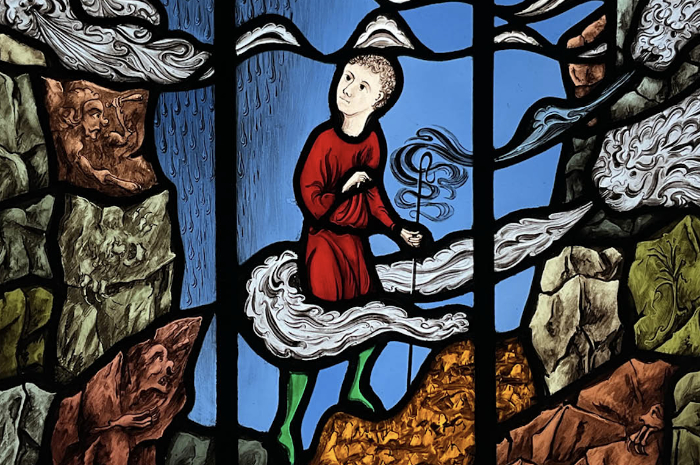
Taking glass design into the third dimension
Wilfried Grootens broke away from his traditional training in glass painting and developed a layered approach to build 3D contemporary glass forms. These change in exciting ways with the perspective of the viewer. Linda Banks finds out more.
What led you to start working with glass?
I got an enamel kiln for Christmas when I was eight or nine years old and started making jewellery, cufflinks, rings, house numbers and little things like that. The fascination with being able to create bright, transparent or opaque layers of colour with matte enamel powders after firing was magical to me at the time.

What glass techniques have you used?
At the age of 16 I started training as a glass and porcelain painter and mosaicist. After 3.5 years I received my professional diploma. After this I worked as an assistant to different artists and learned to become more experimental. I was able to move away from classical glass painting without losing sight of the basic production requirements, such as firing temperatures, cooling phases and brightening times, painting media and binder formulations. The discovery of the spray gun for applying enamel paints to larger glass surfaces deserves a special mention here, too.
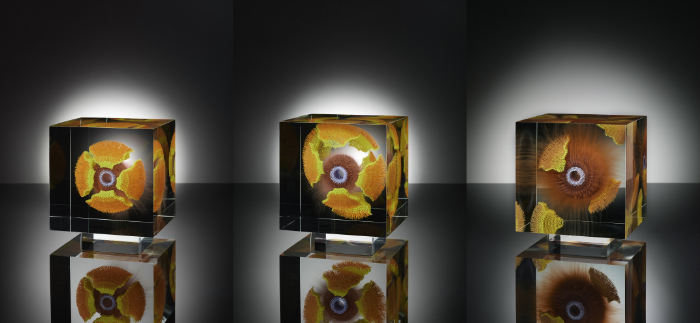
How did you develop your glass painting technique?
At one point while stacking painted glass sheets, I had the idea to create something three-dimensional. Of course, this required a completely different approach. I didn’t have to work with shading on one glass pane to create the illusion of three-dimensionality, but painted a shape on many panes one-dimensionally and got a three-dimensional image in the glass body by gluing the glass panes together.
When I then began to polish my painted, glued panes I was very excited with the results. In this way I created reflections of the painted body on the inner walls of the glass, which also changed with the location of the viewer. This was new; I had never seen anything like it before and decided to follow this new path.

What is your creative approach? Do you draw your ideas out or dive straight in with the materials?
I make a construction sketch to determine how large the individual layers of paint need to be in order to form the overall shape I want when they are brought together and glued.
Then I make a colour sketch to plan the colours to be used, the style of painting and the binder of the individual colours. This is crucial for the colour flow when gluing.
Of course, something is added during the working process, or I work without a plan.

You travelled widely and worked in the music field when you were younger. What inspires your glass work today?
Music and travelling have always been, and still are, my source of inspiration. Encountering other cultures, their music and art expression based on the culture’s inherent nature and understanding of God expands my thinking and feeling.
What message(s) do you want to convey through your art?
I want my art to create a counterpoint to the surrounding man-made ugliness. I want to take the viewer into my little world, amaze them and invite them to discover my work.
What is your favourite tool or piece of equipment and why?
First of all I have to mention my turntables. They simplify the work process, as you can bring inaccessible parts of the work to you by turning the plate. I have them for larger format images and for small format ones. Secondly, but no less important, I have my record player to play music.
Do you have a favourite piece you have created?
Not really. However, often a piece I haven’t seen for a long time, that I didn’t think was especially good when I made it, suddenly reveals qualities that I didn’t notice before.

Where do you show and sell your work?
My work is represented by Sandra Ainsley Gallery in Canada, in the US at Habatat Gallery, Montague Gallery, PieceArt Gallery, Raven Gallery and Shaw Gallery, at Plateaux Gallery in London, UK, Etienne Gallery in the Netherlands, Sikabonyi Gallery in Austria, Le Cube Vernet Gallery in France, plus Continuum Gallery, Schürenberg Kunsthandel and Galerie Spiegel in Germany.
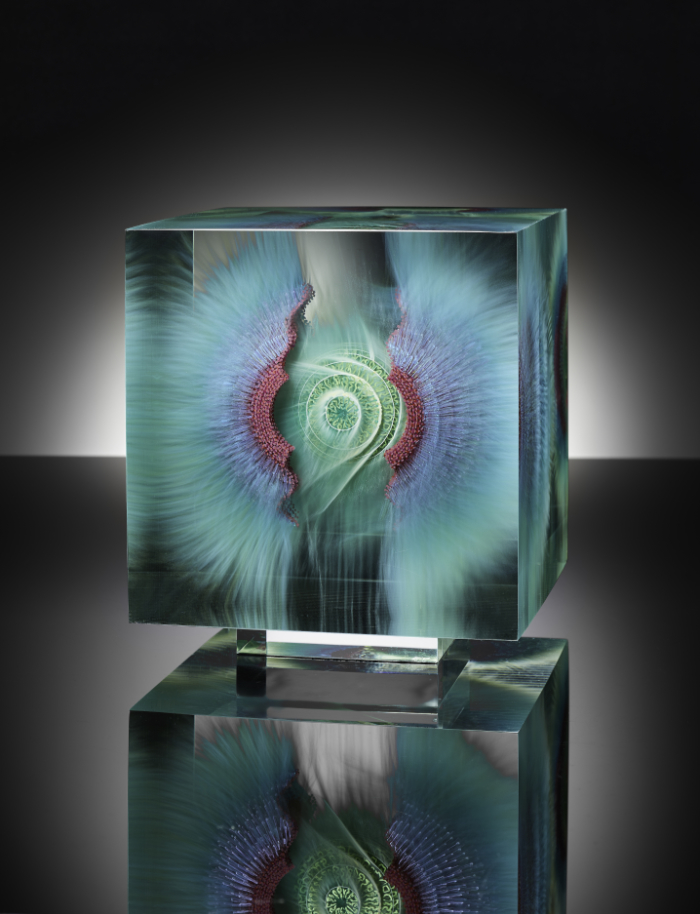
What advice would you give to someone starting out on a career with glass?
The most important thing is to develop something that no one else does the same way.
Preferably create a signature style that makes you recognisable as the artist. Participate in international exhibitions that publish documentation or a catalogue, even if it costs money and does not bring in money. Accept criticisms as small defeats and not as a fundamental rejection of your work. Keep in contact with the galleries that sell your work so that you can see how they treat it and appreciate it, and whether they pay in a reasonable time.
Do you have a career highlight?
I have several. Namely, every time a museum or a foundation or a collection takes a work of mine and makes it accessible to the public, and thus seen.
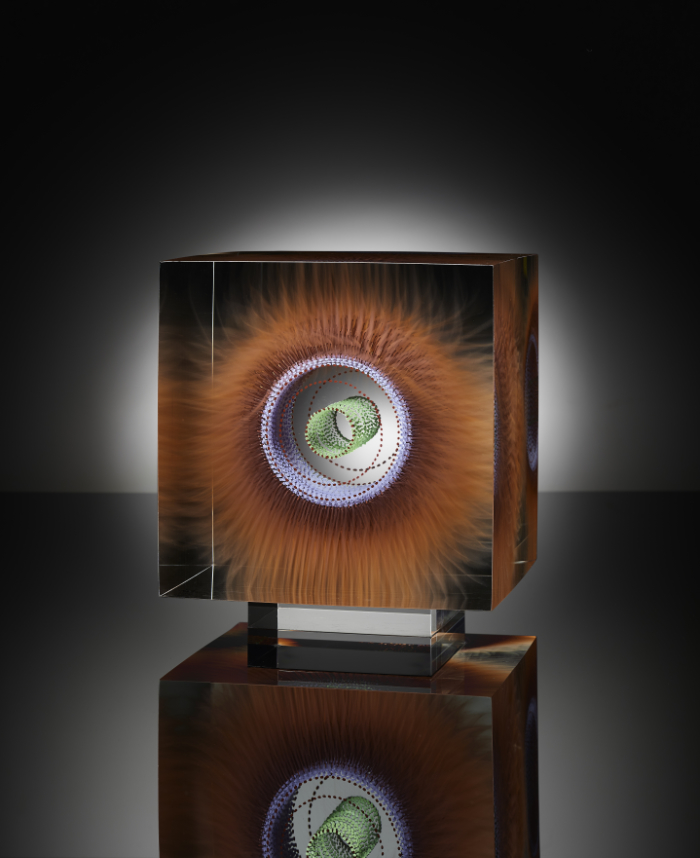
Where is your glass practice heading next?
At the moment I am working on wall work that consists of five layers of glass, which are painted individually, then glued, forming a depth image of superimposed layers of paint. The drying time for each pane is long and the painting surface is also on a turntable so that the paint does not run off on one side. I find what happens during the drying process is fascinating, influenced by coincidences and unpredictability.

Then I want to work on my ‘vessels’, although this name is misleading because these are solid and only the shape and internal painting suggest a vessel. I will wait and see what comes after that.
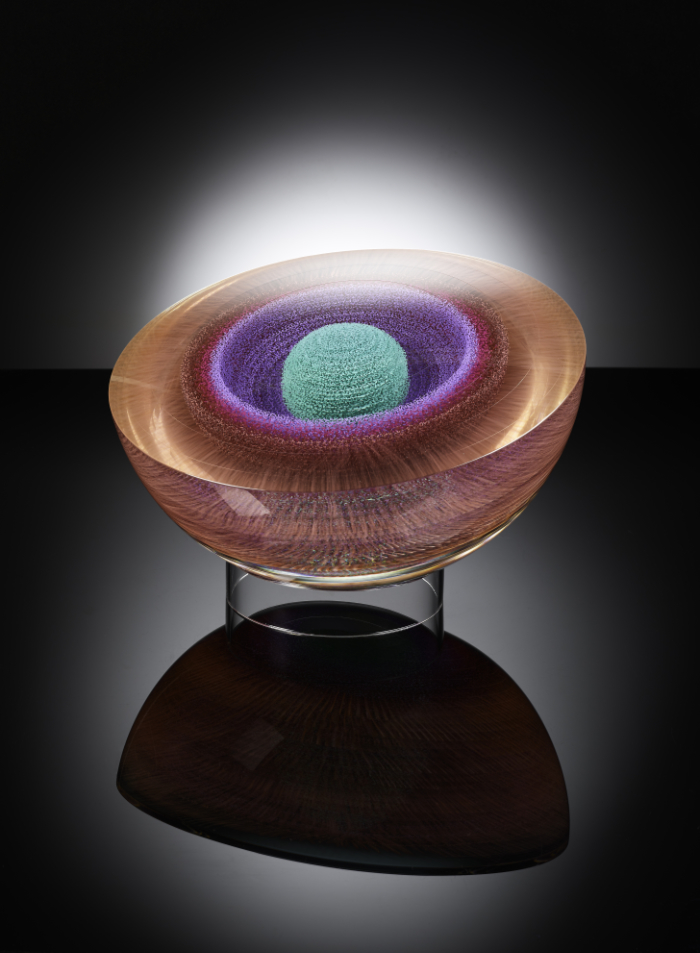
Is the global energy crisis affecting your practice?
I work primarily with cold processes. However, the production of flat glass, which is my raw material, the energy needed for grinding and polishing, transport, tools – everything has almost doubled in price in a very short time. That raises concerns about how it will continue.
The artists who use hot and warm processes are even more impacted, with their enormous expenditure on energy for melting and cooling. Some pieces will not be made at all, because the energy consumption cannot justify the banality of the design or the project.
About the artist

Wilfried Grootens was born in 1954 in Uedem, Germany. Between 1969 and 1973 he undertook an apprenticeship as glass and porcelain painter with Hein Derix in Kevelaer. From 1973 to 1981 he travelled through Asia, South and Central America and the Middle East.
In 1988 he gained his master’s certificate and the following year he set up his own studio in Kleve.
He has won many awards and exhibited internationally.
Find out more via his website.
Main feature image: Wilfried Grootens’ ‘Cosmic Efflorescence 4’ is comprised of painted, glued and polished glass.
All photos by Norbert Heyl.
